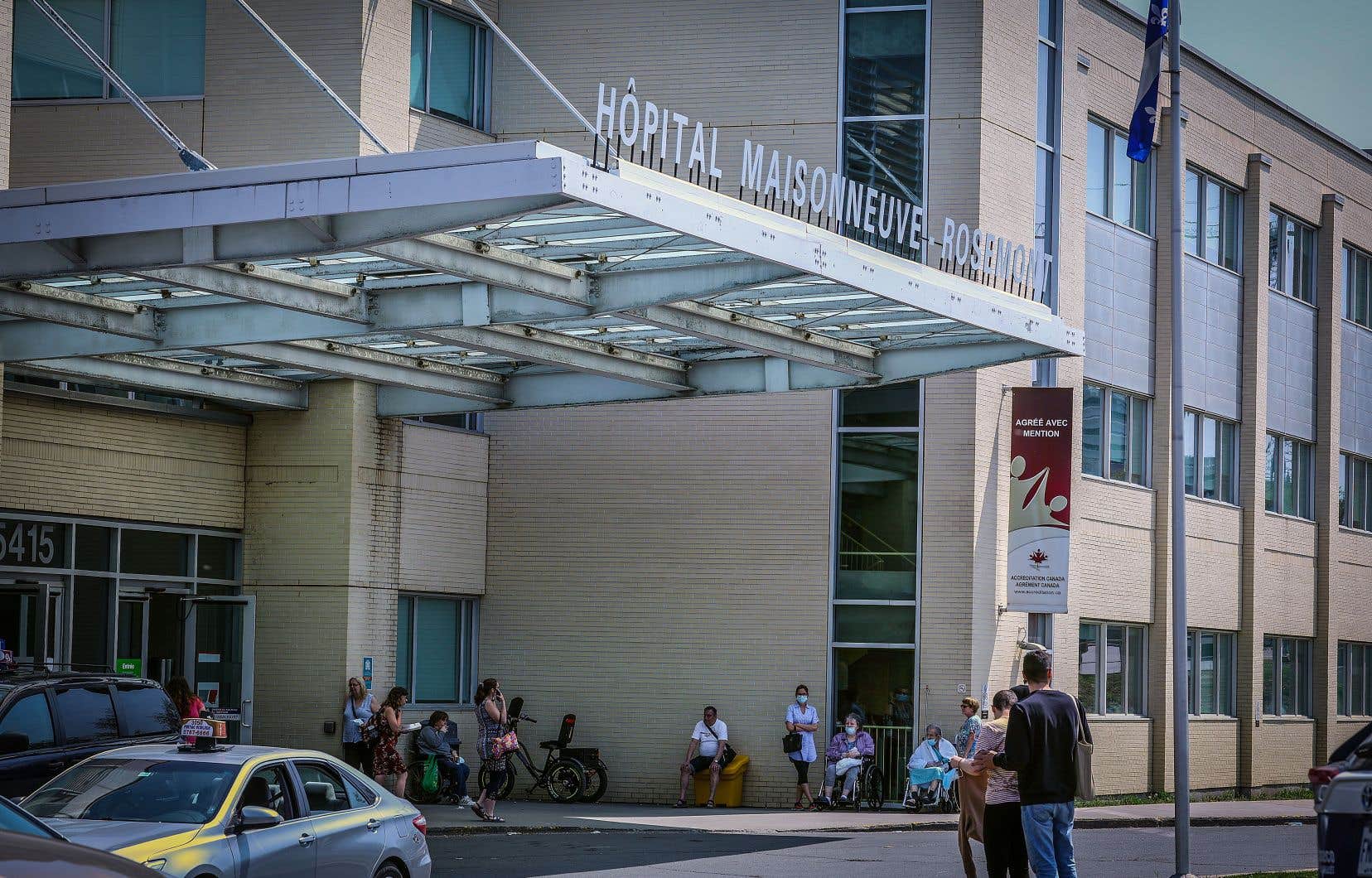While the Maisonneuve-Rosemont hospital should be transformed into a mega construction site within about a year, management must implement a major operation to reorganize services. If the objective is to maintain all services, it will be necessary to involve the entire Integrated University Health and Social Services Center (CIUSSS) of East-de-l’Île-de-Montréal to achieve this.
When the project was announced last Monday, the Minister of Health, Christian Dubé, mentioned a timetable of eight to ten years for the completion of the work. Then, in the tender documents submitted online Tuesday for architectural and engineering services, we mention a “probable end date of the mandate […] in September 2037.
Obviously, we must expect a long cohabitation between construction workers and health workers at the Maisonneuve-Rosemont hospital (HMR). In order to be ready to welcome everyone, the president and CEO of the CIUSSS, Jean-François Fortin Verreault, says he has “already started to make room”.
The CEO, who already has experience with the University of Montreal Hospital Center (CHUM) project, is well placed to know that the challenge “is going to be demanding.” He insisted on the importance of mobilizing other CIUSSS service points in order to relieve HMR.
The family medicine groups (GMF), the Santa Cabrini hospital and the University Institute of Mental Health will notably put their shoulder to the wheel. We also want to improve home care services to free up beds.
“Now, mental health hospitalization is done at the University Institute of Mental Health. We also recently moved part of the ophthalmology activities, part of the general surgery, with a call for tenders which was made to the private sector, he explained. We operate ourselves, in private premises operated by our employees in Angus. »
This relocation of part of the activities made it possible to “free up clinical volume,” added Mr. Fortin Verreault, who plans to deploy other similar measures over the next year.
The palliative care unit at the Rosemont pavilion should be hosted at the Saint-Michel residential and long-term care center (CHSLD). The University Institute of Mental Health, the private medical center and the CHSLD are all located within a five-kilometer radius of HMR.
In the case of the Santa Cabrini hospital, which is located very close to Maisonneuve-Rosemont, Quebec would have provided funds to set up two additional operating rooms within two years.
“We are working on a consistent clinical plan to ensure that it works. It’s going to be demanding, but we have solutions to get there,” assured the CEO.
Thanks to this coordination work, Minister Christian Dubé took the liberty of suggesting that “preparatory work” could begin as early as 2024 in the current installations.
Although very enthusiastic about the idea of seeing the hospital modernize, the Union of Technicians and Professionals of the CIUSSS de l’Est-de-l’Île-de-Montréal, affiliated with the Canadian Union of Public Employees (CUPE) , intends to remain on the lookout throughout the work.
“Until its full realization, we will have to be vigilant,” warned its president Marie-Hélène Brunet in a press release. In particular, it wants to ensure “that the inevitable temporary relocation of care and services has as few negative impacts as possible”. She says she is worried about a possible “scattering of services”.
“Private mini-hospital”
The other valve mentioned by the minister is the commitment made by the government to build a “mini-private hospital” in the east of Montreal. This project, described by some as a “large GMF” or even a “private CLSC”, was denounced by defenders of the public network.
The minister’s statement also tickled CUPE. For the union, all this looks like “a pretext to privatize the health network”.
According to the union, a greater place given to the private sector will “aggravate staff retention problems” and “siphon off public funds”.
However, in the eyes of the minister, what matters is “access to emergency services” for patients. Giving the example of clinics operated by specialized nurse practitioners (SNPs), he mentions that these other points of service help reduce pressure on hospital emergency units.
According to Christian Dubé, a call for tenders should be launched this fall with a view to finding a private partner interested in managing this new service. He wants this future private emergency to welcome patients in 2025.
Is this service likely to be ephemeral and become obsolete in a decade when the work has been carried out and we are banking on a new ultra-modern hospital? The minister dreams of it, but doesn’t believe it. He remains of the opinion that patients requiring care, but whose condition is not alarming, will always need a place to go.
He points out that approximately 50% of the traffic in Quebec’s emergency rooms are currently priority 4 or 5 cases, therefore non-urgent. These patients must be redirected to family medicine clinics, IPS clinics or soon to private emergency rooms.
The Canadian Press’s health content receives funding through a partnership with the Canadian Medical Association. The Canadian Press is solely responsible for editorial choices.
